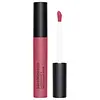What's inside
What's inside
 Key Ingredients
Key Ingredients

 Benefits
Benefits

 Concerns
Concerns

 Ingredients Side-by-side
Ingredients Side-by-side

Cyclopentasiloxane
EmollientDimethicone
EmollientPolyethylene
AbrasiveSynthetic Fluorphlogopite
Sucrose Acetate Isobutyrate
Trimethylsiloxysilicate
EmollientPolypropylsilsesquioxane
C30-50 Alcohols
EmulsifyingPolybutene
Polymethylsilsesquioxane
Triethoxycaprylylsilane
Aloe Barbadensis Leaf Extract
EmollientBis-Hydroxyethoxypropyl Dimethicone
EmollientCetyl PEG/PPG-10/1 Dimethicone
EmulsifyingTocopheryl Acetate
AntioxidantDimethicone Crosspolymer
Emulsion StabilisingDimethicone/Vinyl Dimethicone Crosspolymer
Skin ConditioningPentaerythrityl Tetraethylhexanoate
EmollientBHT
AntioxidantBenzoic Acid
MaskingCI 77891
Cosmetic ColorantCI 45410
Cosmetic ColorantMica
Cosmetic ColorantIron Oxides
CI 15850
Cosmetic ColorantCI 19140
Cosmetic ColorantCI 42090
Cosmetic ColorantCyclopentasiloxane, Dimethicone, Polyethylene, Synthetic Fluorphlogopite, Sucrose Acetate Isobutyrate, Trimethylsiloxysilicate, Polypropylsilsesquioxane, C30-50 Alcohols, Polybutene, Polymethylsilsesquioxane, Triethoxycaprylylsilane, Aloe Barbadensis Leaf Extract, Bis-Hydroxyethoxypropyl Dimethicone, Cetyl PEG/PPG-10/1 Dimethicone, Tocopheryl Acetate, Dimethicone Crosspolymer, Dimethicone/Vinyl Dimethicone Crosspolymer, Pentaerythrityl Tetraethylhexanoate, BHT, Benzoic Acid, CI 77891, CI 45410, Mica, Iron Oxides, CI 15850, CI 19140, CI 42090
Isododecane
EmollientCaprylic/Capric Triglyceride
MaskingTrimethylsiloxysilicate
EmollientSilica
AbrasiveHydrogenated Polyisobutene
EmollientBis-Diglyceryl Polyacyladipate-2
EmollientIsobutylmethacrylate/Bis-Hydroxypropyl Dimethicone Acrylate Copolymer
Disteardimonium Hectorite
StabilisingTribehenin
EmollientEuphorbia Cerifera Wax
Simmondsia Chinensis Seed Oil
EmollientPropylene Carbonate
SolventTocopheryl Acetate
AntioxidantPunica Granatum Flower Extract
Skin ConditioningPolyglyceryl-3 Diisostearate
EmulsifyingAroma
Ethylhexylglycerin
Skin ConditioningHippophae Rhamnoides Oil
EmollientLinalool
PerfumingCI 42090
Cosmetic ColorantIron Oxides
CI 45410
Cosmetic ColorantCI 73360
Cosmetic ColorantCI 15850
Cosmetic ColorantCI 19140
Cosmetic ColorantCI 77891
Cosmetic ColorantIsododecane, Caprylic/Capric Triglyceride, Trimethylsiloxysilicate, Silica, Hydrogenated Polyisobutene, Bis-Diglyceryl Polyacyladipate-2, Isobutylmethacrylate/Bis-Hydroxypropyl Dimethicone Acrylate Copolymer, Disteardimonium Hectorite, Tribehenin, Euphorbia Cerifera Wax, Simmondsia Chinensis Seed Oil, Propylene Carbonate, Tocopheryl Acetate, Punica Granatum Flower Extract, Polyglyceryl-3 Diisostearate, Aroma, Ethylhexylglycerin, Hippophae Rhamnoides Oil, Linalool, CI 42090, Iron Oxides, CI 45410, CI 73360, CI 15850, CI 19140, CI 77891
 Reviews
Reviews

Ingredients Explained
These ingredients are found in both products.
Ingredients higher up in an ingredient list are typically present in a larger amount.
Ci 15850 is the pigment color red. It is an azo dye and created synthetically.
Azo dyes need to be thoroughly purified before use. This allows them to be more stable and longer-lasting.
This ingredient is common in foundations, lipsticks, and blushes. This color is described as brown/orangey red.
It has many secondary names such as Red 6 and Red 7. According to a manufacturer, Red 6 usually contains aluminum.
Learn more about CI 15850CI 19140 is also known as Tartrazine. Tartrazine is a synthetic dye used in cosmetics, foods, and medicine to add a yellow color.
Tartrazine is created from petroleum and is water-soluble.
Some people may experience allergies from this dye, especially asthmatics and those with an aspirin intolerance.
Learn more about CI 19140Ci 42090 is a synthetic dye created from petroleum. It is used to give a bright blue color to cosmetics, medicine, and food.
CI 45410 is a synthetic red-pigment and dye.
It often goes by both Red 28 or Red 27; manufacturers label both ingredients as CI 45410.
This dye is commonly found in makeup because it imparts a vivid color. Some types of this dye change color based on pH level and interaction with moisture:
Your skin has a natural pH of around 4.5 - 5.5.
According to the FDA, CI 45410 is not permitted for use in eye products.
Red 27 is a flourescein dye and commonly used as a fluorescent tracer in medicine.
Learn more about CI 45410Ci 77891 is a white pigment from Titanium dioxide. It is naturally found in minerals such as rutile and ilmenite.
It's main function is to add a white color to cosmetics. It can also be mixed with other colors to create different shades.
Ci 77891 is commonly found in sunscreens due to its ability to block UV rays.
Learn more about CI 77891Tocopheryl Acetate is AKA Vitamin E. It is an antioxidant and protects your skin from free radicals. Free radicals damage the skin by breaking down collagen.
One study found using Tocopheryl Acetate with Vitamin C decreased the number of sunburned cells.
Tocopheryl Acetate is commonly found in both skincare and dietary supplements.
Learn more about Tocopheryl AcetateThis silicone is an emollient. Emollients create a thin film on the skin to prevent moisture from escaping.
It is not soluble in water and helps increase water-resistance in products.
According to a manufacturer, it can blend seamlessly with silicone oils, such as Cyclopentasiloxane.
Learn more about TrimethylsiloxysilicateThis ingredient is a combination of red, black, and yellow iron oxide pigments. This combination of colors is usually found in foundation, because it results in a "skin" color.